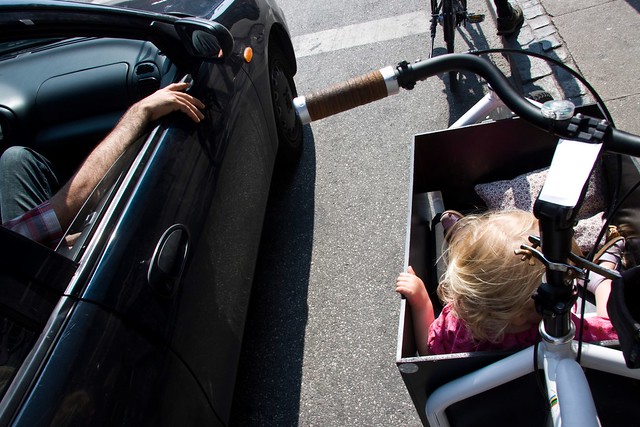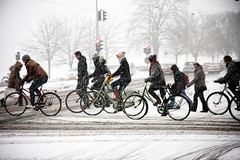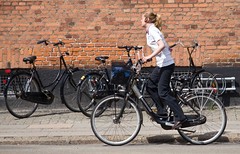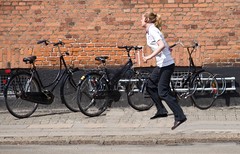
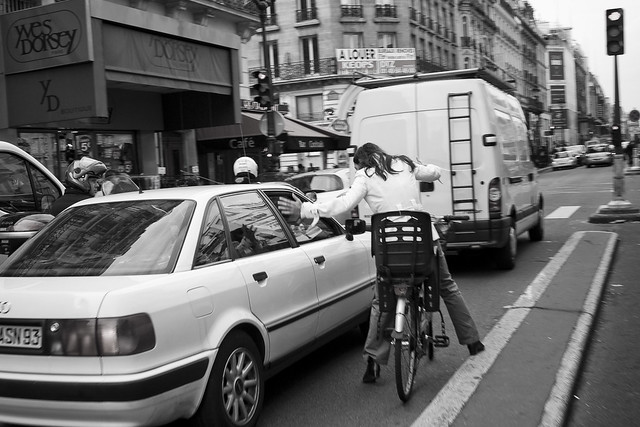 I’ve always loved this shot I took in Paris a few years back. Depending on where you’re from, you’ll form a conclusion as to what’s happening when you look at it. An aggressive motorist/cyclist confrontation, many will assume. I was riding behind this lady on the shared bus lane/bike path when the passenger in the car said something. I was too far away to hear what. The lady hopped over the hump and stopped. I was now approaching and took the photo. I slowed as I passed, in order to hear what was being said. The lady was gesticulating and saying “I don’t know! I don’t have a car and I’m from the 5th!” Laughter from both parties followed. The “5th” means the 5th arrondissement (district), which is south of the river from where this shot was taken. She was just being asked for directions. It was all very friendly.
I’ve always loved this shot I took in Paris a few years back. Depending on where you’re from, you’ll form a conclusion as to what’s happening when you look at it. An aggressive motorist/cyclist confrontation, many will assume. I was riding behind this lady on the shared bus lane/bike path when the passenger in the car said something. I was too far away to hear what. The lady hopped over the hump and stopped. I was now approaching and took the photo. I slowed as I passed, in order to hear what was being said. The lady was gesticulating and saying “I don’t know! I don’t have a car and I’m from the 5th!” Laughter from both parties followed. The “5th” means the 5th arrondissement (district), which is south of the river from where this shot was taken. She was just being asked for directions. It was all very friendly.
One of the greatest moments I've experienced since travelling with Copenhagenize and Cycle Chic was in New York. Not direct interaction as such, but still memorable. I had just come off a bridge from Brooklyn and was heading uptown. Waiting at the red light like normal people do. I was on a black Bullitt and wearing normal clothes and with a camera slung round my back. I was sitting up and waiting for the light. I looked around and, to my right, I met the eye of an older woman of Latina persuasion in a big-ass SUV. She was staring at me. I looked back. Then she just nodded. Once. A nod that said "respect." or "cool". I smiled back at her. The light changed and we parted ways. I doubt that she's on a bicycle today in the city, but maybe I was her first Citizen Cyclist spotting, waiting at the red light and on a cool bicycle. I'll never forget that moment.
It's an episode you see anywhere that Citizen Cyclists are given gardens in which to thrive and grow. A motorist or car passenger doesn't see some strange sub-culture, they merely see a fellow citizen on a different form of transport. One that is accessible and easy to engage in conversation. A fellow human being on their own protected lane or track but still anthropologically an integral part of the city.
